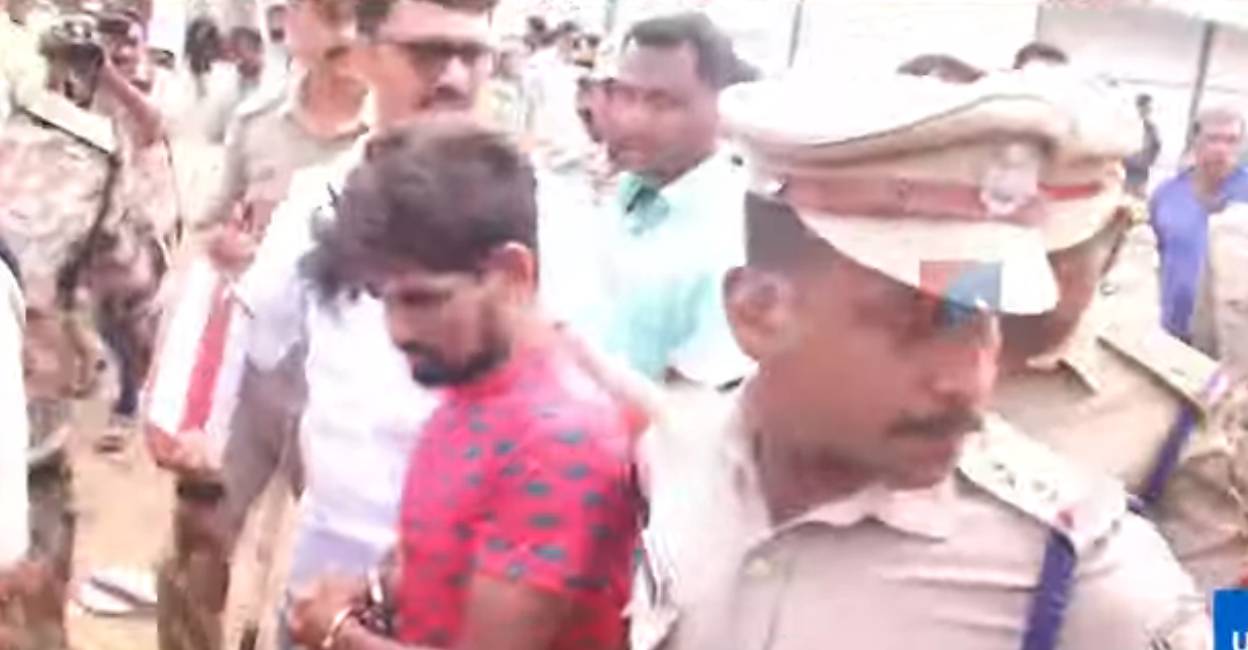Onmanorama Explains | Will public parade of Aluva murder accused weaken case?

Mail This Article
On August 6, Sunday, 28-year-old Bihar native Asafaq Alam, the accused in the brutal murder of a five-year-old girl of a migrant labour family, was publicly paraded with massive police protection along the areas near the Aluva market. The Special Investigation Team took the accused through the "corridor of crime", from the point where he picked the child to the banks of the Aluva river where the body was recovered, to collect confirmatory information.
The face of the accused was not covered as is usual in such crime cases. The presence of the accused in the area had aggravated the emotional trauma of the parents of the victim.
Though it was a Sunday, and the police procedure was claimed to be kept a secret, an angry crowd had gathered. Many were seen clicking pictures and shooting videos on their mobile. The entire process was covered live by news channels.
On the face of it, the cops were doing their job under Section 27 of the Evidence Act. It was also an announcement of the force's intent to construct a tight case. Problem is, the public collection of evidence in this case can weaken the case against Asafaq.
Was a public evidence collection necessary?
According to top IPS officers and lawyers Onmanorama talked to, such a process, under Section 27 of Evidence Act, needs to be done only if the evidence collection leads to the discovery of something new or the recovery of a solid piece of evidence like a murder weapon.
Say, a woman reaches a police station with the blood-dripping head of her husband and says that the torso has been dumped in the backyard of her house and the weapon she had used is hidden in the store room.
The police just cannot go by the confession of the self-proclaimed killer; Section 25 of the Evidence Act states that a confession made to a police officer cannot be used against the accused.
Therefore, the police have to take the accused to the location and 'discover' the husband's torso and 'recover' the murder weapon and, thus, prove the claim.
However, in the Aluva murder, there was nothing new to be 'discovered', or 'recovered'.
All necessary evidence -- semen samples, blood stains, hair strands, the dead body, the victim's clothes and slippers -- were already collected, and the 'scene mahassar' was also drawn up. The police had also secured incriminating CCTV visuals of Asafaq walking with the child and then returning from the river side without her.
Top sources in the police department said the procedure on August 6, with the accused in full public view, did not lead to any new information.

Will public parade of Asafaq boomerang?
It can, in court. In this case, the test identification parade (TIP) of the accused has not been conducted.
In a TIP, eight persons resembling Asafaq in age, height and complexion have to be paraded before the witness/witnesses. In the Aluva case, a headload worker and a juice shop worker is said to have seen the accused and the child together. Importantly, the TIP has to be carried out in the presence of a first class judicial magistrate.
Only the conclusions of the TIP have evidentiary value. A witness identifying Asafaq in front of the police has no evidentiary value. The presence of a magistrate is a must.
To think of a TIP at this stage would be too late as Asafaq's face has become too familiar, thanks to the way the evidence collection was turned into a public spectacle.
Now, in the absence of a TIP, the defence can argue in court that Asafaq was not the murderer and the witnesses have been misled by the pictures and visuals of Asafaq in mainstream media. CCTV visuals are notoriously inconclusive without supporting proof.
Is it legal to parade persons in custody?
No, says the Kerala Police Act.
Here is what Section 31(3) of the Act says: "No persons in custody shall be paraded or allowed to be photographed and no press conference shall be conducted without the permission of the state police chief for the purpose of publishing the same in the newspaper or in any visual media."
Experts say the police have to strike a balance between the requirement of transparency and the globally accepted principle of 'presumption of innocence'. According to this principle, any person can claim innocence until guilt is established by a fair trial.
There is also the danger of physical harm to the accused during a public parade.
If there is harm to the reputation or life of the accused, Section 121 of the Kerala Police Act says that the responsible officers can be jailed for up to a year.

Can police display crime weapons?
Definitely not. The Kerala High Court had strongly rebuked a highly decorated IPS officer like Vinson M Paul for claiming during a press conference that an S-shaped knife had been used in the murder of Paul Muthoot in 2009.
"A police officer cannot display a murder weapon in public before a witness identifies it in court," a top criminal lawyer said. "If the weapon is already in the public domain, it loses its evidentiary value. Its probative force is nullified," he said.


